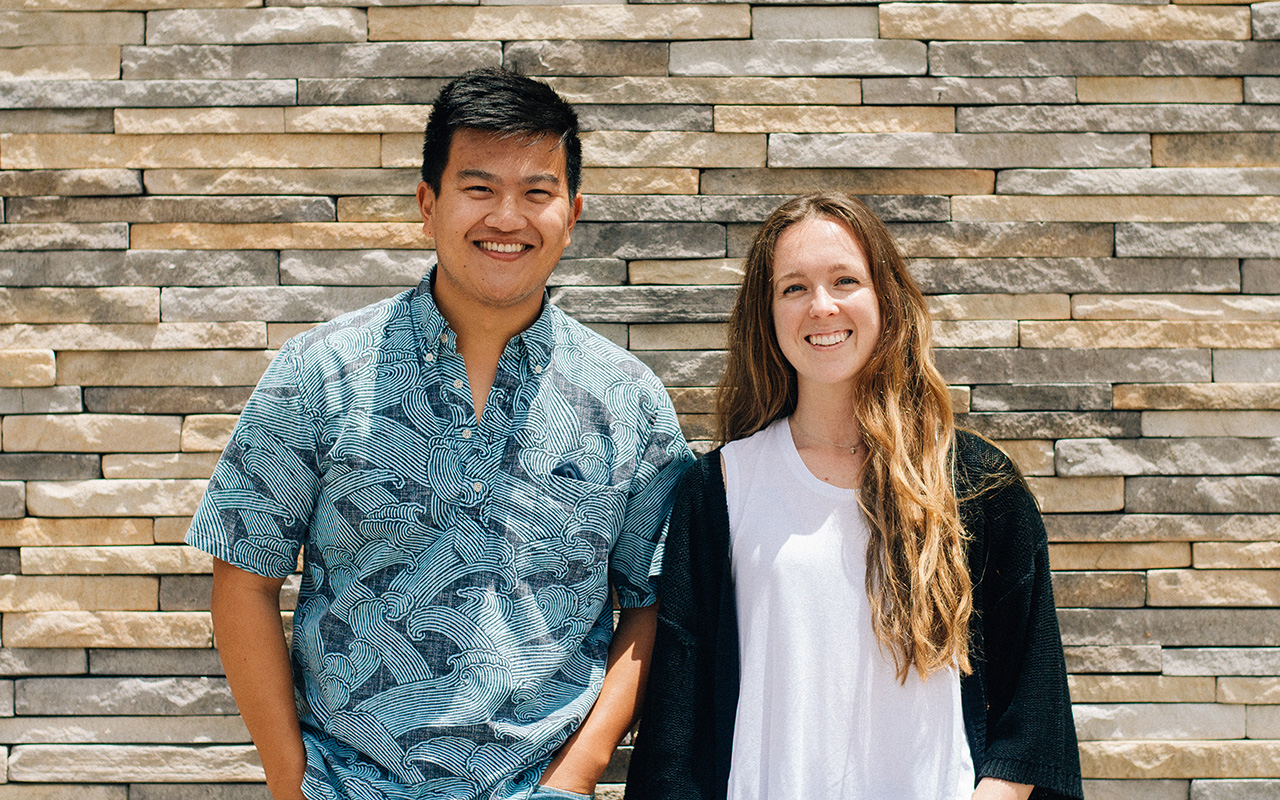
Sustainable method to 3D print steel wins big at Triton Innovation Challenge
By:
- Katherine Connor
Published Date
By:
- Katherine Connor
Share This:
Article Content
Engineers, physicians, biologists and business students at UC San Diego showcased their environmentally focused technologies at the ninth annual Triton Innovation Challenge business competition. A startup developing a 3D printing technique that can manufacture steel cheaper than existing methods, with no carbon emissions and minimal wasted scrap metal, earned the $7,000 Grand Prize.
The Triton Innovation Challenge is a business competition focused on fostering creativity and bringing to the spotlight commercially promising, environmentally focused technologies generated by students, staff and faculty from across UC San Diego. The competition is hosted by the Jacobs School of Engineering, Rady School of Management and Scripps Institution of Oceanography, and showcases startups or technologies that come from, are inspired by, or directly impact nature. The competition is funded by the William and Kathryn Scripps Family Foundation.
On May 21, five teams presented their ventures virtually to a panel of five judges and an audience, with $12,500 worth of prizes on the line: a Grand Prize of $7,000; Runner Up earning $4,000; and an Audience Choice award of $1,500. All the competing teams participated in a pitch-prep workshop and received other training and networking opportunities as part of the Challenge program.
Green Steel Printing, a venture founded by Jacobs School of Engineering materials science PhD students Olivia Dippo and Andy Zhao, earned the Grand Prize for their solution to reducing carbon emissions and metal waste in the steel manufacturing industry. Current steel manufacturing processes take iron oxide ore, and burn coal or natural gas to reduce the ore into iron, which is then converted to steel. This accounts for 7 percent of global carbon dioxide emissions.
“For every ton of steel produced, 1.8 tons of carbon dioxide is emitted,” said Zhao. “There’s an inherent carbon price you have to pay to produce steel; there are fossil fuels embedded in the steel supply chain.”
The traditional process of manufacturing steel parts is subtractive, meaning companies purchase large blocks of steel, and then remove material until they reach the desired shape and size of the part they’re building, resulting in a lot of scrap metal waste.
Green Steel aims to solve both of these problems by combining metal 3D printing, with green hydrogen technology, to generate steel with no carbon emissions, and significantly less scrap metal waste. Their patent pending 3D printing process is also projected to be cheaper than existing methods.
“Inspired by metal 3D printing and inspired by using green hydrogen as a replacement for fossil fuels, we have come up with our Green Steel printer,” said Dippo. “The two inputs are iron oxide ore-- which is how the material comes out of the earth-- and green hydrogen. These two things are mixed together in a reaction zone that forms iron powder. We can add additional alloying elements such as carbon in order to make steel, and at the very bottom of the machine we have our print head, where we can print the desired shapes.”
In the future, they plan to partner with aerospace or automotive companies to produce steel parts.
Dippo and Zhao are securing additional funding and lab space to further develop their steel 3D printing machine, and hope to have a prototype complete in about a year.
The judges selected Lichen Lab as the Triton Innovation Challenge Runner Up. Lichen Lab, founded by biology alumnus Will Landry, developed and sells an alarm to help lab users keep their fume hoods closed, not only improving lab safety, but reducing energy consumption and saving money as well. When these fume hoods are left open when not in use, they waste upwards of $1,000 in energy per hood annually.
The Audience Choice award went to SynBioEnergy, founded by bioengineering PhD student Tyler Myers. SynBioEnergy uses a bioreactor to treat wastewater and desalinate water, using the components filtered out of the water as a biofuel to power the device. They plan to market the small-scale device to wineries and agricultural industries needing to meet state wastewater treatment regulations.
Other Triton Innovation Challenge finalists include Algeon Materials, founded by Rady School of Management students, which leverages ocean derived materials like kelp to create plastic alternatives, initially in the retail space for items like hangers; and Kryos Cooling, led by a UC San Diego physician and faculty in the School of Public Health, which is developing a cooling vest for the increasing number of people living in hot climates, or who work outside in the summer.
In addition to the Triton Innovation Challenge, Scripps Oceanography and Rady School of Management are now launching another innovation program, startBlue, on campus this fall. The startBlue accelerator program is currently accepting applications from San Diego-based innovators, engineers, and scientists who are working to solve ocean-related challenges. The deadline to apply for the fall cohort is July 2, 2021. Visit the startBlue website to learn more.
Share This:
You May Also Like
Stay in the Know
Keep up with all the latest from UC San Diego. Subscribe to the newsletter today.



